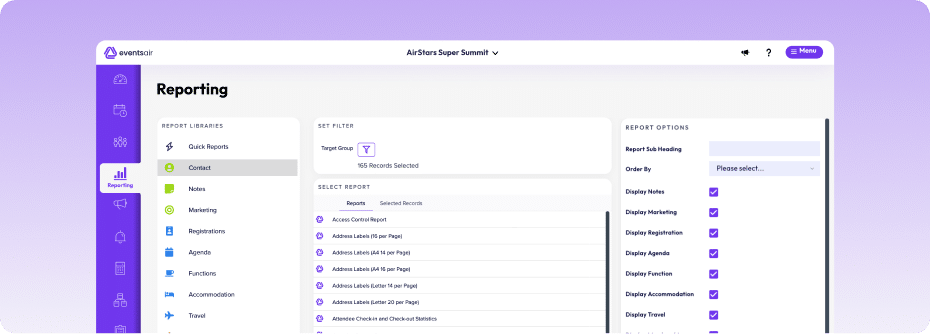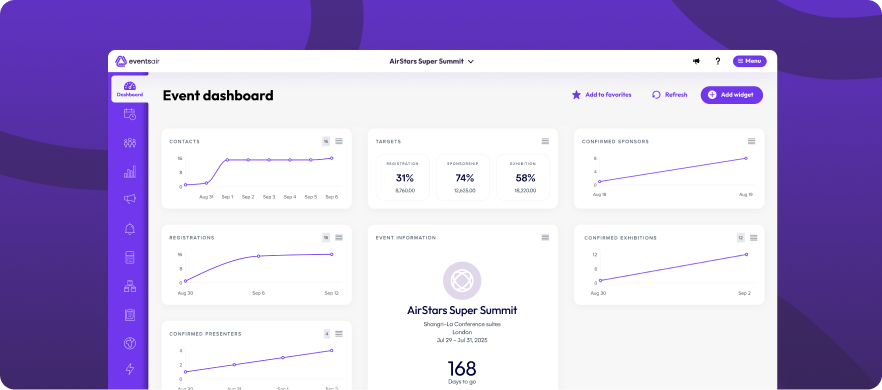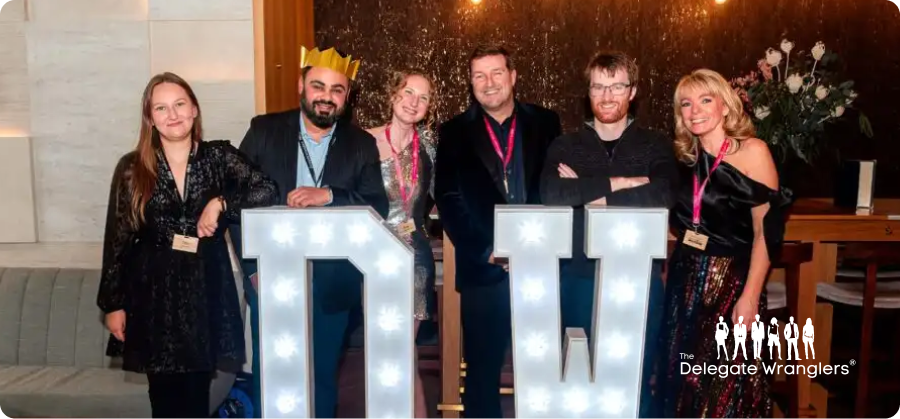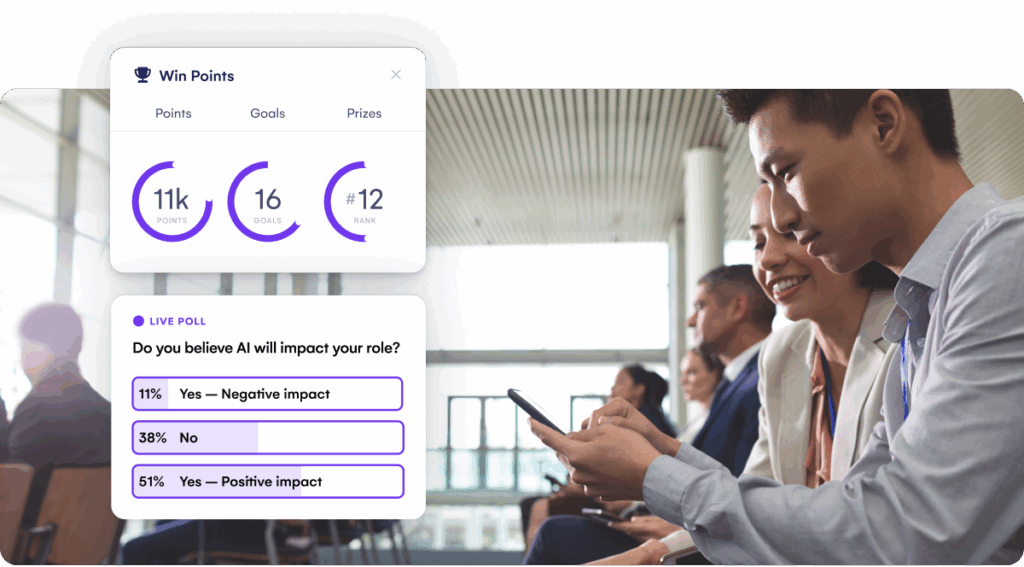
Boosting member engagement is one of the biggest challenges facing associations, clubs, and professional groups today. Especially when keeping members active and invested in your organization can feel like an uphill battle. Many associations, clubs, and professional groups struggle with declining participation, low event attendance, and minimal interaction in online communities. Even with the best programs and perks, members often disengage when they don’t feel connected or valued.
In this EventsAir article, we’re going to explain seven proven strategies to boost member engagement in your organization. You’ll discover practical approaches that create meaningful interactions, increase loyalty, and inspire your members to participate consistently.
But first…
What is member engagement?
Member engagement refers to the level of involvement, interaction, and connection members have with an organization and its community. It goes beyond simple membership or attendance; it’s about creating meaningful experiences that keep members active, valued, and loyal.
At its core, engagement measures how invested members feel in your organization’s mission, activities, and benefits. Highly engaged members don’t just show up; they participate, contribute, and advocate for your organization.
Why member engagement matters
- Higher retention: When members feel valued and connected, they’re more likely to stick around year after year.
- Stronger advocacy: Engaged members naturally promote your events and community, helping attract new participants through authentic word-of-mouth.
- Greater loyalty: People are more willing to support your mission, initiatives and and goals when they feel part of the story.
- Increased revenue: Loyal, active members are more likely to attend more events, invest in more services, and renew memberships.
- Vibrant community growth: Engagement fosters deeper connections between members, building a thriving, supportive network that sustains your organization’s impact.
7 Effective member engagement strategies to boost participation and loyalty
1. Personalized communication
Targeted messaging is one of the most powerful tools to boost member engagement. Generic emails or broad announcements often get ignored, while personalized communication makes members feel recognized and valued.
Segment your members
Divide your audience based on demographics, interests, past participation, or engagement levels. For example:
- New members might receive welcome guides and orientation content.
- Active members could get invitations to exclusive events or advanced programs.
- Inactive members may benefit from reminders, surveys, or re-engagement campaigns.
Tailor content to preferences
Personalization goes beyond inserting a member’s name. Use insights from past event attendance, content downloads, or participation trends to deliver relevant updates, resources, or opportunities. For instance, if a member consistently attends webinars on a specific topic, send recommendations for upcoming sessions in that area.

Leverage automation tools
Platforms like Mailchimp or Constant Contact make personalized outreach easier at scale. They let you segment members, schedule messages for peak engagement times, and automate follow-ups, all while keeping content relevant and timely.
Personalized communication increases open rates, drives participation in events or programs, and strengthens the overall sense of connection with the organization. When members feel that communications are meaningful and relevant, they are far more likely to engage consistently, respond to calls-to-action, and remain loyal over time.
2. Interactive events and experiences
Engaging, well-designed events are a cornerstone of member engagement. Members are more likely to participate and stay connected when they experience events that are dynamic, relevant, and thoughtfully organized.
Design events with purpose
Every event should have clear objectives that align with member interests and organizational goals. Consider:
- Webinars for knowledge sharing on trending industry topics.
- Workshops that offer hands-on learning experiences or skill development.
- Networking events to foster peer-to-peer connections and mentorship opportunities. See our guide on how to host a networking event.
- Hybrid conferences that combine in-person and virtual attendance, ensuring accessibility and broader participation.
Create memorable experiences
The key to driving engagement is making events more than just presentations. Encourage interaction with structured agendas, breakout sessions, and opportunities for informal connection. Small touches, such as personalized agendas or attendee recognition, can make participants feel valued and more likely to return for future events.
Maximize participation
Use clear communication and registration processes to remove friction. Providing members with easy access to event schedules, updates, and resources before and during the event keeps them engaged from start to finish.
With EventsAir, organizations can streamline event planning, registration, and management to ensure seamless experiences. Customizable registration portals, automated reminders, and integrated scheduling tools allow planners to focus on crafting meaningful content and connections rather than administrative tasks.

Practical tips for impact:
- Align event formats with member preferences and engagement history.
- Offer interactive opportunities such as breakout discussions or small-group collaborations.
- Provide post-event resources or recordings to extend the experience and reinforce value.
By focusing on well-structured and interactive events, organizations can strengthen engagement, encourage active participation, and foster lasting connections among members.
3. Recognition and rewards programs
Acknowledging member contributions, achievements, and milestones is a proven way to build loyalty and drive ongoing participation. Recognition doesn’t always need to be large-scale; even small gestures show members that their involvement matters.
Examples of effective programs:
- Badges and awards that highlight milestones such as years of membership, event attendance, or volunteer service.
- Exclusive perks like early access to premium content, VIP event invitations, or discounted registration fees.
- Leaderboard competitions during events that track participation in challenges, workshops, or networking sessions.
Recognition works best when it taps into both personal pride and community visibility. Members are more engaged when they see their efforts acknowledged publicly, whether in newsletters, during events, or within digital communities.
A strong example of recognition through gamification comes from The Delegate Wranglers’ Nearly Christmas Party. To elevate engagement, they used EventsAir’s Attendee App to launch pre-event challenges and quizzes.

Attendees accumulated points and competed on in-app leaderboards, fueling excitement before the event even began. With 50–75% of participants actively engaging in gamified activities, the atmosphere carried into the live event, making recognition both fun and competitive.
This approach shows how recognition programs don’t just reward members after the fact, they actively enhance the event experience in real time. When recognition is woven into the engagement journey, it transforms routine participation into a more memorable and motivating experience.
4. Engaging digital communities
Strong member engagement doesn’t just happen at events, it thrives in the spaces where members connect every day. Building digital communities gives members a consistent place to share ideas, seek advice, and form meaningful connections outside of scheduled gatherings.
Where these communities live:
- Forums or dedicated platforms designed for structured discussions.
- Social groups on LinkedIn or Facebook where members can interact informally.
- Slack or Microsoft Teams channels for ongoing conversations, resource sharing, and collaboration.
Digital communities succeed when members feel empowered to lead conversations. Encourage networking by:
- Prompting discussions with industry-relevant questions.
- Highlighting member successes or case studies to spark dialogue.
- Facilitating mentorship opportunities through small groups or topic-focused channels.
Why it matters for retention and loyalty:
- Consistency: Members who engage online between events stay connected to the organization year-round.
- Value exchange: Communities provide real-time access to knowledge and peer support, making membership feel indispensable.
- Belonging: Members develop stronger emotional ties when they see themselves as part of a vibrant, supportive network.
When organizations nurture digital communities, they transform one-off interactions into lasting engagement. Members stop viewing participation as occasional; they begin to see it as part of their professional or personal identity.
5. Surveys and feedback loops
Understanding your members begins with listening. Surveys and feedback mechanisms give organizations a direct window into member needs, preferences, and satisfaction levels, helping shape events, communications, and programs that genuinely resonate.
Types of feedback to collect:
- Post-event surveys: Gather immediate reactions to speakers, sessions, and logistics.
- Periodic engagement surveys: Assess broader satisfaction with membership value.
- Pulse polls or satisfaction checks: Quick, lightweight questions to spot trends early.
Best practices for feedback loops:
- Keep surveys concise to encourage higher completion rates.
- Ask both quantitative (ratings, scales) and qualitative (open-ended) questions.
- Always close the loop by sharing key takeaways and visible improvements with members.
You can get event survey question ideas here.

Feedback only creates value when applied. Organizations that adapt programming or refine communications based on survey insights send a clear message:
“We hear you, and we act on what you say.”
EventsAir provides more than 150 ready-to-use reports, customizable dashboards, and real-time insights, making it simple to track registration behaviors, engagement levels, and satisfaction metrics in one place. With a single source of truth, planners can quickly identify what’s working and where adjustments are needed, ensuring every event builds on the last.
6. Educational and value-added content
Members stay engaged when they feel they’re consistently learning and growing. Offering exclusive educational opportunities not only adds tangible value but also reinforces your organization as a trusted resource.
Examples of value-driven content:
- Workshops & webinars: Deliver live or on-demand sessions that address relevant skills or industry updates.
- E-books & toolkits: Provide practical resources members can reference long after an event.
- Member-only articles & reports: Share insights not available to the general public.
Why it works:
- Positions your organization as a knowledge leader.
- Encourages ongoing interaction beyond events.
- Strengthens loyalty by demonstrating a commitment to members’ professional or personal development.
Best practices:
- Tailor content to different member segments.
- Combine short, snackable formats (blogs, videos) with in-depth learning (courses, guides).
- Make content accessible across devices and available on-demand for convenience.
To scale this effectively, associations can leverage platforms like EventsAir. In addition to managing events, EventsAir makes it easy to host virtual or hybrid learning sessions, live webinars, and post-event on-demand replays. Its Continuing Education (CE) module also tracks attendee credits automatically, ensuring members get recognized for their participation.
7. Volunteer and leadership opportunities
One of the strongest ways to deepen engagement is by giving members the chance to contribute their time, expertise, and leadership. Organizations that create clear pathways for involvement transform passive members into active advocates.
Why it matters:
- Builds connection: Members who volunteer feel more invested in the community.
- Fosters ownership: Taking on roles within committees, task forces, or projects gives members a direct stake in the organization’s success.
- Encourages advocacy: Leaders and volunteers often become the most effective promoters of membership value.
Practical ways to implement:
- Committee roles: Invite members to join working groups or advisory boards where their skills add value.
- Project-based opportunities: Short-term volunteer roles tied to specific initiatives allow broader participation without long-term commitment.
- Mentorship programs: Pair seasoned members with newer ones, creating both leadership and learning opportunities.
- Event support: Engage volunteers as session moderators, peer reviewers, or ambassadors at conferences.
By formalizing these pathways, organizations do more than deliver services, they provide a platform for members to lead, influence, and grow.
Streamline member engagement with EventsAir
Keeping members engaged goes beyond running activities — it’s about building authentic connections that drive loyalty and long-term participation. When organizations focus on personalization, recognition, and delivering continuous value, members feel a stronger sense of belonging and commitment to the community.
That’s where EventsAir makes the difference. Our platform helps organizations deliver effortless engagement experiences, from personalized communications to interactive events and ongoing learning opportunities. By centralizing these efforts in one flexible solution, EventsAir empowers you to strengthen relationships and make every member interaction count.
Ready to elevate your member engagement? Request a demo with EventsAir today!
Attendee Engagement | Event Planning & Management
See EventsAir in action
Discover why 12,000+ event professionals trust EventsAir to deliver effortless events, every time.




